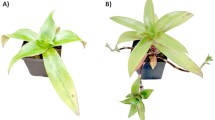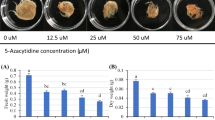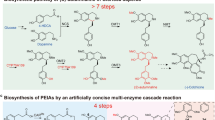Abstract
KOSTOFF1 has recently directed attention to the similarity in action of colchicine and acenaphthene, and recommended the latter substance for purposes of chromosome doubling. Preliminary tests with acenaphthene used in saturated solutions of liquid media2 adapted to the observation of mitosis in stamen hairs of Tradescantia give no indication that acenaphthene is at all comparable to colchicine as a polyploidizing agent. After 2 and 4½ hours, counts of nuclear stages showed the following percentages:
This is a preview of subscription content, access via your institution
Access options
Subscribe to this journal
Receive 51 print issues and online access
$199.00 per year
only $3.90 per issue
Buy this article
- Purchase on SpringerLink
- Instant access to full article PDF
Prices may be subject to local taxes which are calculated during checkout
Similar content being viewed by others
References
Kostoff, D., C.R., U.R.S.S., 19, 197–199 (1938).
Nebel, B. R., and Ruttle, M. L., J. Heredity, 29, 1–9 (1938).
Kostoff, NATURE, 141, 1144–1145 (1938).
Author information
Authors and Affiliations
Rights and permissions
About this article
Cite this article
NEBEL, B. Colchicine and Acenaphthene as Polyploidizing Agents. Nature 142, 257 (1938). https://doi.org/10.1038/142257b0
Published:
Issue date:
DOI: https://doi.org/10.1038/142257b0
This article is cited by
-
Colchicine and x-rays in the treatment of plant and animal overgrowths
The Botanical Review (1945)
-
Die experimentelle Erzeugung polyploider Sojabohnen mit Alkaloidgemischen in Verbindung mit Kreuzungen polyploider Rassen
Der Züchter (1943)
-
Polyploidie, veranlaßt durch chemische Mittel. Insbesondere Colchicinwirkung bei Leguminosen
Der Züchter (1940)
-
Colchicine and Acenaphthene as Polyploidizing Agents
Nature (1938)



